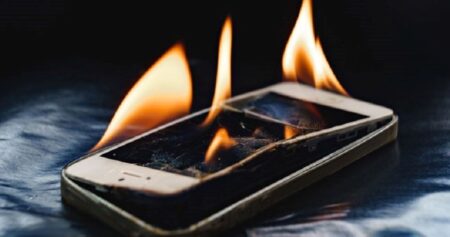Battery fires are on the rise in NSW
Electric bikes, scooters and discarded batteries have a nasty way of bursting into flames. NSW is campaigning against battery fires.Firefighters are responding to an average of more than three battery fires a week from in-home charging issues or incorrect disposal.
A smoke alarm saved three men from an e-bike fire in their Guildford home last month. The bike’s lithium battery pack caught fire in a bedroom as one of the residents slept. The flames spread to the bed and clothing.
In Merewether, a man jumped from a window to escape a blaze, thought to have been started by an e-scooter last month. He was asleep when the fire broke out in his loungeroom.
Also last month, a fire believed to have been sparked by an electric scooter damaged a unit at Wentworthville, in Sydney’s west. Three people inside the unit managed to escape before the flames took hold.
Fire and Rescue NSW data shows there has been an almost 20 per cent increase in battery-related fire or explosion incidents, when comparing the first half of this year with the first half of last year.
In the first six months of 2023 there were 114 lithium battery related fires, with key items of concern being power packs and chargers, micro-mobility devices like e-bikes and e-scooters and portable power banks.
Local councils and waste contractors have seen a significant rise in the number of truck and rubbish fires caused by batteries, which if damaged can explode and spark fires which are difficult to put out.
Batteries which are thrown into rubbish bins instead of being disposed of safely also contribute to an increase in recyclable materials winding up in landfill.
There are several recycling options available to consumers. Batteries can be taken to a Community Recycling Centre or dropped off at a dedicated recycling point available at many large retailers like Aldi, Coles, Woolworths, Bunnings and Officeworks.
Products with batteries embedded in them, like mobile phones, laptops and power tools should be disposed of at an e-waste recycling facility or e-waste drop-off event.
“The good news is we can recycle 95 per cent of batteries. But at the moment, only 10 per cent are being recycled”, said NSW environment minister Penny Sharpe.
“It’s time to take charge of battery waste. Households need to give them a new life by taking them to your closest collection site or using your council’s e-waste services. It’s better for the environment and also much safer.”
“Batteries are starting to feature more prominently in fire statistics, with lithium power packs and charger fires an increasing concern for fire crews”, said NSW emergency services minister Jihad Dib.
Enjoy our articles? Become a member of CPSA today for only $15.
Firefighters are responding to an average of more than three battery fires a week from in-home charging issues or incorrect disposal.
A smoke alarm saved three men from an e-bike fire in their Guildford home last month. The bike’s lithium battery pack caught fire in a bedroom as one of the residents slept. The flames spread to the bed and clothing.
In Merewether, a man jumped from a window to escape a blaze, thought to have been started by an e-scooter last month. He was asleep when the fire broke out in his loungeroom.
Also last month, a fire believed to have been sparked by an electric scooter damaged a unit at Wentworthville, in Sydney’s west. Three people inside the unit managed to escape before the flames took hold.
Fire and Rescue NSW data shows there has been an almost 20 per cent increase in battery-related fire or explosion incidents, when comparing the first half of this year with the first half of last year.
In the first six months of 2023 there were 114 lithium battery related fires, with key items of concern being power packs and chargers, micro-mobility devices like e-bikes and e-scooters and portable power banks.
Local councils and waste contractors have seen a significant rise in the number of truck and rubbish fires caused by batteries, which if damaged can explode and spark fires which are difficult to put out.
Batteries which are thrown into rubbish bins instead of being disposed of safely also contribute to an increase in recyclable materials winding up in landfill.
There are several recycling options available to consumers. Batteries can be taken to a Community Recycling Centre or dropped off at a dedicated recycling point available at many large retailers like Aldi, Coles, Woolworths, Bunnings and Officeworks.
Products with batteries embedded in them, like mobile phones, laptops and power tools should be disposed of at an e-waste recycling facility or e-waste drop-off event.
“The good news is we can recycle 95 per cent of batteries. But at the moment, only 10 per cent are being recycled”, said NSW environment minister Penny Sharpe.
“It’s time to take charge of battery waste. Households need to give them a new life by taking them to your closest collection site or using your council’s e-waste services. It’s better for the environment and also much safer.”
“Batteries are starting to feature more prominently in fire statistics, with lithium power packs and charger fires an increasing concern for fire crews”, said NSW emergency services minister Jihad Dib.
Enjoy our articles? Become a member of CPSA today for only $15.
